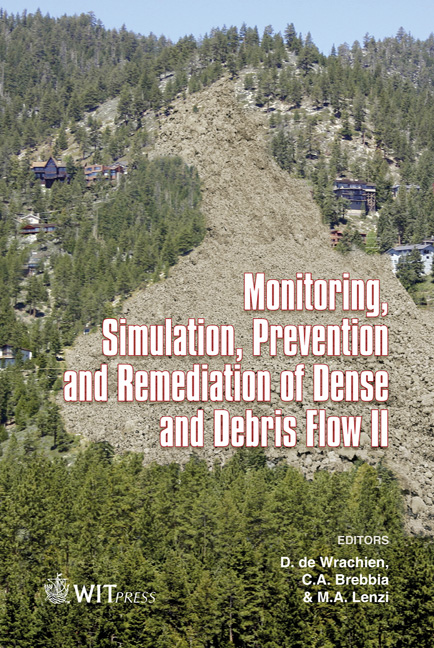Infrasound Measurements Of Debris Flow
Price
Free (open access)
Transaction
Volume
60
Pages
10
Page Range
3 - 12
Published
2008
Size
2,862 kb
Paper DOI
10.2495/DEB080011
Copyright
WIT Press
Author(s)
J. Hübl, S. C. Zhang & A. Kogelnig
Abstract
Processes such as wind, avalanches, traffic and debris flow are sources of subaudible sounds in the low frequency infrasonic spectrum. These signals have the ability to propagate kilometres from the debris flow source and provide a basis for developing wide area automated monitoring systems that can operate in locations unaffected by the process activity. This study focuses on naturally occurring infrasound produced by a 3 days debris flow event in July 2007, in the Jiangjia Gully, Yunnan, China. The debris flows had a big variety in terms of the amount of discharge and furthermore they differ from very fluid surges up to more solid surges with a density of 2000kg/m³. The data was monitored with two different microphones, a custom made Chinese Sensor and a standard infrasound measuring microphone from a German Company. Contemporary video recording and photographing took place for visual validation of the acoustic signals. The aim is to specify the debris flow signal out of environmental interferences through the use of digital filtering and frequency analysis. Keywords: infrasound monitoring, debris flow, frequency spectrum, field study. 1 Introduction Rapid mass movements like debris flows, debris floods and intensive bedload transport are periodic or episodic phenomena in alpine regions. Due to the fast socio-economic development of mountain regions, these processes which are at the intersection between the natural environment and the environment formed and controlled by human activities increasingly become a hazard for people and
Keywords
infrasound monitoring, debris flow, frequency spectrum, field study.





